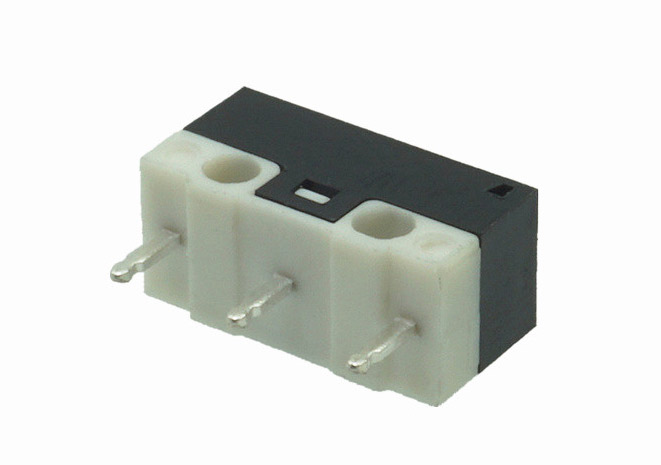Micro Switch Terminology
Rated value: Generally refers to the value that is used as a guaranteed benchmark for switching characteristics and performance, such as rated current, rated voltage, etc., which are premised on specific conditions (type of load, current, voltage, frequency, etc.).
Resin fixing (plastic terminal): A method of improving drip resistance by eliminating exposed live parts and fixing the parts by filling resin after wiring the terminal parts with wires.
Insulation resistance: refers to the resistance value between non-connected terminals, between each terminal and non-charged metal parts, and between each terminal and ground.
Withstand voltage: The critical value that does not cause insulation damage after applying high voltage to the specified measurement site for 1 minute. (also called 1min power frequency withstand voltage test)
Contact resistance: Indicates the resistance of the contact part of the contact, but generally indicates the resistance value including the resistance of the spring and the conductor at the terminal part.
Vibration resistance: Malfunction vibration When the micro switch is in use, the vibration range within which the contacts closed due to vibration will not separate within a specified time.
Shock resistance: Durable shock means that the micro switch will not be damaged by the mechanical shock during transportation or installation, and the shock within the range that meets the operating characteristics.
Malfunction shock: refers to the shock range that the contacts closed due to the shock will not be separated within the specified time when the micro switch is in use.
Mechanical life: The switch life when the finger contact is not energized and the overtravel (OT) is set to the specification value at the specified operating frequency to make it run.
Electrical life: The switching life when the rated load is connected to the contact and the over-travel (OT) is set to the specified value at the specified operating frequency.

Sort by appearance:
Brake plunger type: There is a column at the top of the micro switch, and the device presses the column from the top to turn on the switch.
Sliding straight wheel type: There is a column at the top of the micro switch, and there is a roller on the column. The device presses the roller from the top to turn on the switch.
Swing bar swing bar with rollers: A swing bar with rollers extends laterally from the top of the micro switch, and the device presses down the swing bar from the top, that is, the switch is turned on.
Top small button type: A small button protrudes from the top of the micro switch, and the device presses the button from the top to turn on the switch.
Swing bar swing bar: A swing bar extends laterally from the top of the micro switch, and the device presses the swing bar from the top to turn on the switch.
Classified by performance:
Ordinary type: the most common micro switch, used in normal temperature and humidity environment.
High temperature type: In order to prevent the micro switch from being damaged in a high temperature environment, the general temperature exceeds 60 degrees and is used at 120 degrees.
Waterproof type: In order to prevent the micro switch from being damaged in wet and cold environment.
Explosion-proof type: mainly used in high dust environment.
Outdoor type: If the micro switch is used outdoors for a long time, it is very vulnerable to environmental hazards, so it should be sealed, waterproof and dustproof.


